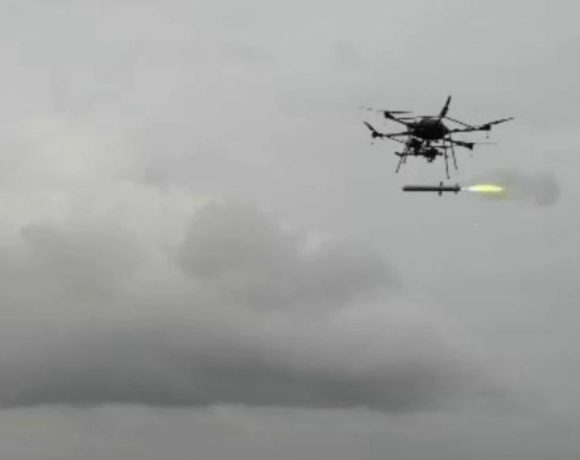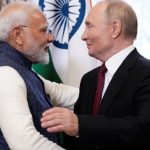
Seven Experts, One Verdict: Operation Sindoor Redefined India’s Military Doctrine
India’s Operation Sindoor, launched between May 7 and 10 in response to the brutal Pahalgam terror attack, is being hailed not only as a tactical success but as a turning point in India’s strategic doctrine. Moving far beyond symbolic retaliation, it marked a calibrated use of force, deep strikes on Pakistan Air Force infrastructure, and a shift from reactive deterrence to cost-imposing precision warfare. But what stands out most is how the global defense community outside India, Pakistan, and China interpreted this evolution. Seven renowned defense analysts—spanning Austria to Japan—offered unique insights into the operation’s execution, doctrinal implications, and regional consequences. Their collective verdict is unanimous: India has rewritten the rulebook.
Tom Cooper (Austria): Cracks in Pakistan’s Airpower Shell
Tom Cooper, a prominent Austrian military aviation historian, was one of the first to lay out a forensic-level account of Pakistan’s air losses. His analysis stands out for its specificity. He identified five distinct aircraft destroyed: a Mirage-5, a JF-17C, a C-130 transport, a Mirage variant, and notably, one F-16—one of Pakistan’s most guarded air assets. But Cooper didn’t stop at aircraft. He reported that Indian strikes penetrated the hardened entrances of suspected nuclear storage sites in Sargodha and Nur Khan, potentially rendering warheads temporarily “undeployable.”
Cooper’s blunt conclusion was damning for Pakistan’s defense structure: its Chinese-supplied HQ-9 air defense systems were ineffective, failing to intercept India’s BrahMos and SCALP-class missiles. This, he argued, exposed Pakistan’s strategic overdependence on Chinese hardware and highlighted India’s mastery of coordinated missile warfare.
John Spencer (USA): Precision Over Escalation
John Spencer, Chair of Urban Warfare Studies at West Point’s Modern War Institute, analyzed Operation Sindoor through the lens of escalation dynamics and modern military doctrine. He praised India’s use of long-range stand-off weapons and satellite-coordinated precision to neutralize targets with zero civilian casualties. According to Spencer, this was not just a punitive strike—it was a sophisticated application of “escalation dominance.”
He underscored India’s real-time information warfare advantage, applauding how the Indian government released radar and satellite proof to preempt misinformation from Pakistan. This transparency, he noted, gave India the narrative upper hand globally. Spencer labeled Sindoor a “case study” in calibrated military response under a nuclear shadow and suggested other democracies learn from it.
Denys Davydov (Ukraine): Strike Depth and Denial Exposure
Denys Davydov, a Ukrainian military analyst and YouTuber, offered a battlefield-level analysis grounded in satellite verification and flight-path reconstructions. He focused on India’s ability to penetrate Pakistan’s forward bases, including Bholari and Mushaf. While Pakistan denied losses, Davydov noted anomalies in PAF sortie counts and visible damage to infrastructure from post-strike imagery.
More importantly, Davydov flagged the sluggishness of Pakistan’s counter-response, implying poor defense coordination and an overwhelmed AD network. He characterized Operation Sindoor as a demonstration not just of Indian firepower, but of superior tactical planning and tempo control in short-duration air campaigns.
Arzan Tarapore (USA-based, Indian-origin): From Deterrence to Cost-Imposition
Arzan Tarapore, a South Asia military strategist writing for War on the Rocks, placed Operation Sindoor in doctrinal context. Unlike earlier retaliations that served symbolic or electoral purposes, Sindoor, he argued, marked a shift to cost-imposing operations. India no longer seeks to deter with vague threats—it now degrades terrorist infrastructure directly and visibly.
He mapped the evolution: 2016 Uri led to cross-LoC surgical strikes, 2019 Pulwama triggered the Balakot airstrike, and now Sindoor represents doctrinal maturity—leveraging stand-off weapons and loitering munitions to escalate without provocation. His insight was pivotal: India has detached terrorism from “non-state” semantics, framing it as a strategic threat embedded in Pakistan’s military calculus.
Dr. Walter Ladwig (UK): Defying the Nuclear Threshold Narrative
Dr. Ladwig of King’s College London focused on Sindoor’s strategic implications within the nuclear deterrence discourse. He argued that Sindoor shattered the myth that India would always exercise strategic restraint under Pakistan’s nuclear shadow. The operation showed that nuclear deterrence does not offer immunity for terror-exporting states.
More profoundly, Ladwig highlighted India’s new framework—it no longer treats terror as a separate problem. Instead, it recognizes state-enabled terror as a legitimate target for conventional military response. In that light, Sindoor was not a violation of norms, but a realignment of deterrence logic in the subcontinent.
Dr. Satoru Nagao (Japan): A Responsible Global Model
Japanese strategic scholar Dr. Satoru Nagao called Operation Sindoor a “responsible and proper” use of military force. He viewed India’s response as a template for democracies dealing with cross-border threats. Unlike large-scale invasions or covert ops, Sindoor struck only high-value terror and military infrastructure—a balance of moral clarity and military precision.
Nagao also cautioned against the long-term viability of Pakistan’s strategy. Supporting terrorist proxies, he argued, is inherently unstable and could eventually threaten the sponsor’s own sovereignty. In that sense, India’s response wasn’t just punishment—it was a warning to all states contemplating the use of militant non-state actors.
Rahul Rawat (India): A Live Drill in Modern War Doctrine
Rahul Rawat of the Observer Research Foundation dissected Sindoor through the lens of Indian military doctrinal application. For him, this was India’s first live test of joint-service precision warfare. With coordinated use of IAF strike aircraft, naval surveillance, and ground-based EW assets, India demonstrated not just muscle—but inter-service maturity.
He emphasized the operation’s calibrated escalation profile—precise, limited, and strategic. No civilian structures, no collateral damage, no city-wide bombardment. Just clear, sharp tactical moves that fulfilled political and military goals without slipping into war. This, Rawat argued, is the new Indian warfighting doctrine in action.
Conclusion: A Strategic Watershed
From Vienna to Tokyo, from West Point to London, the message is clear—Operation Sindoor was not just a counterstrike. It was India’s entry into a new paradigm of deterrence by precision force. Seven experts, all steeped in different domains—air warfare, escalation theory, regional security—agree: India has asserted its right to respond militarily to terrorism without being caged by legacy doctrines or nuclear blackmail.
Sindoor redefined what punishment looks like in modern statecraft—limited, lawful, lethal, and above all, strategic. And for a region long held hostage to “restraint,” that’s a doctrine shift whose echoes will be felt far beyond South Asia.


















